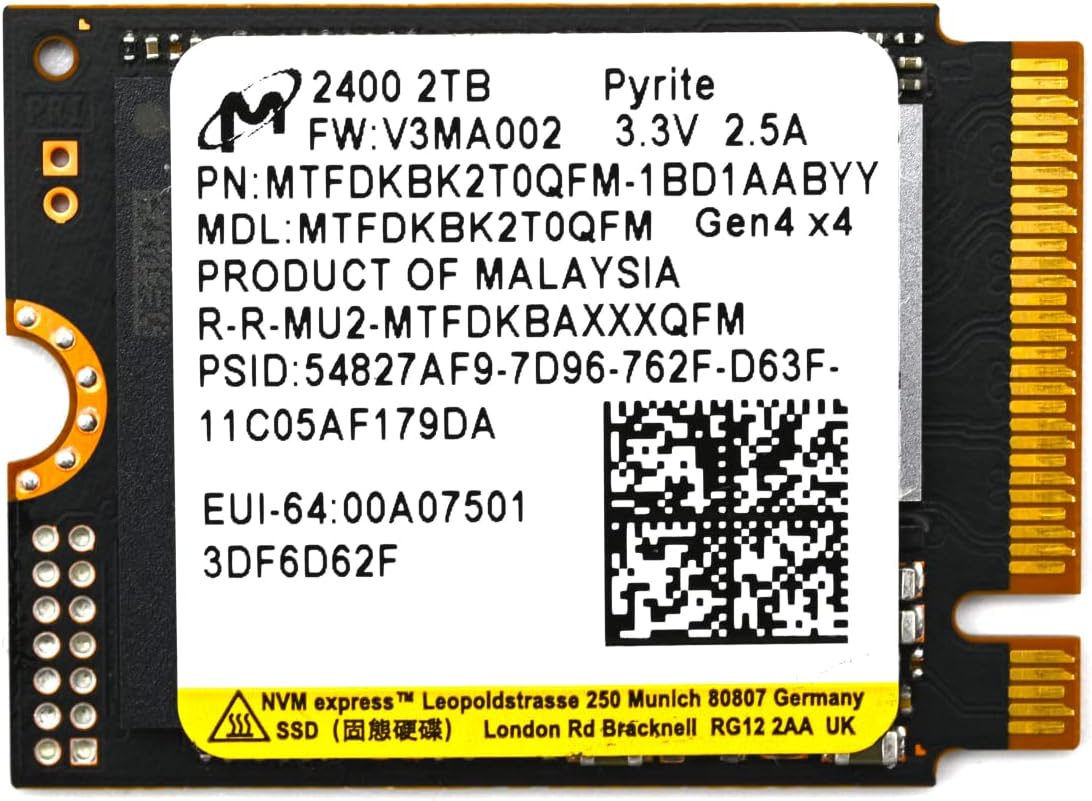About this deal
It's worth noting also that the installation process is a little fiddly, but perfectly achieveable with a little patience and this handy iFixit guide that explains it all. These days I just keep running my manual TRIMs when I do major updates and most of my SSDs never go near the 90% mark anyway before I expand or reallocate: prices below €50/TB evict quite a lot of lesser capacity drives natuerally, which interestingly have never gone near 90% remaining life in all those years. But... I've also had some very old Android tablets die on storage that seemed to reprogram flash at EEPROM speeds, never giving up ...before I did.
It would be interesting to try testing this. Like, a decent SSD and controller should write initially to the pSLC cache, but if it's only at ~40 MB/s, the cache can then be immediately flushed to QLC and would perhaps never fill up (until the SSD is completely full). The problem is that writing even 100GB of data at 40 MB/s takes a while, about 40 minutes. I guess that would be the question: if write speeds are slow, like sub-100 MB/s, do the SSDs even use their pSLC caches, or do they just write straight to TLC/QLC NAND?
I am a Quest-hole Now - Meta Quest 3 Review
Official write specifications are only part of the performance picture. Most SSDs implement a write cache, which is a fast area of (usually) pseudo-SLC programmed flash that absorbs incoming data. Sustained write speeds can suffer tremendously once the workload spills outside of the cache and into the "native" TLC or QLC flash.
This drive is available in a wide range of capacities, with the largest being the 1TB model we've linked here, but if you want to go smaller for whatever reason, Sabrent also offers 256GB and 512GB options. Watch the latest DF Weekly, where Digital Foundry staff discuss the hottest gaming technology news. We use the Quarch HD Programmable Power Module to gain a deeper understanding of power characteristics. Idle power consumption is an important aspect to consider, especially if you're looking for a laptop upgrade as even the best ultrabooks can have mediocre storage. At 2TB for your Steam stash, at least you won't have to swap games in and out as often, which significantly helps to lessen the write burden. I had ARK running once on Linux: It loaded ARK faster from a hard disk than Windows loaded it from NVMe...It would be interesting to try testing this. Like, a decent SSD and controller should write initially to the pSLC cache, but if it's only at ~40 MB/s, the cache can then be immediately flushed to QLC and would perhaps never fill up (until the SSD is completely full). The problem is that writing even 100GB of data at 40 MB/s takes a while, about 40 minutes. I guess that would be the question: if write speeds are slow, like sub-100 MB/s, do the SSDs even use their pSLC caches, or do they just write straight to TLC/QLC NAND?Yup, it's at that point when you want to start reading the controller's source code.
Generally, we would expect BiCS5 to be less efficient than B47R. In our testing, these drives largely peak at 3-4W when something like the 2TB SN740 is rated for a peak of 6.3W, a substantial difference. Our 2TB SN770 reached a peak of 4.91W, which is noticeably less efficient at 1TB and 2TB. In practice, the difference probably isn’t massive as long as you have a newer controller, though - the TN436’s E19T is objectively much less efficient. abufrejoval said:I guess the biggest question is: how do you ensure it's done steady-state processing before you turn the device off?And when the firmware has to deal with things like host buffers, that require interaction with host firmware that could be buggy, too, and simply sprinkle your most critical data structures with random bits, you wonder if these firmware engineers might have burn out or a drinking problem, especially since these junior guys only get to work on the cheaper entry level products, which are much harder to handle than when you've got everything fully under your own control. Powering off (via a hard switch) in the middle of doing anything can be bad. Most drives limit how much stuff sits in volatile storage (RAM caches) for exactly this reason. High-end drives would have a super capacitor to store power so that they can flush things from RAM to NAND in the event of a power loss. For consumer drives, it's possible, if you cycle the power in the middle of writes, to kill an SSD. Probably very unlikely, and it would depend on the model, but I know in the past I heard of this happening. What I really want is a local shared Steam cache on my 10Gbit LAN, only one copy of every game in a houshold with nearly 10 Steam devices of various kinds.
Related:
 Great Deal
Great Deal 